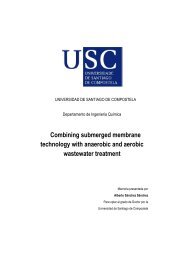You also want an ePaper? Increase the reach of your titles
YUMPU automatically turns print PDFs into web optimized ePapers that Google loves.
9.3 PLATON - ANALYSE Menu <strong>WinGX</strong> <strong>v1.64</strong><br />
4.6 LEPAGE - metrical symmetry check<br />
The metrical symmetry of a lattice may be investigated with the LEPAGE algorithm. The<br />
input to the program may be a name.RES, name.CIF or similar file containing cell parameters<br />
and lattice centring information. The feature may be invoked either via the 'METRICSYMM'<br />
button on the PLATON opening window or with the keyword 'LEPAGE'<br />
Note: This algorithm only gives the symmetry of the lattice. The actual symmetry may be<br />
lower, depending on the content of the unit cell. When the content of the unitcell is known, it<br />
is suggested to run the ADDSYM option, based on the MISSYM(C) algorithm by Y. Le Page.<br />
4.7 Techniques for absorption correction in PLATON<br />
PLATON implements a large variety of established techniques for correction for absorption.<br />
1. Numerical Methods (Supposedly close to exact and based on FACE indexing)<br />
• ABST: Analytical following the Alcock version of "de Meulenaer & Tompa"<br />
• ABSG: Gaussian Integration (Modified from Coppens)<br />
• ABSS: Spherical Correction<br />
2. Semi-empirical methods (based on additional experimental data)<br />
• ABSP: Psi-Scan data based correction (North et al.)<br />
• MULABS: Based on multiscanned reflection data (based on Blessing)<br />
3. Empirical Methods<br />
• DELABS: Modified implementation of the DIFABS algorithm (Walker & Stuart)<br />
4. ABSX: Comparison of calculated (i.e. Face-Indexed Alcock) and experimental psi-scans.<br />
4.8 MULABS - Blessing's method for absorption correction<br />
MULABS implements a semi-empirical method for absorption correction using multiple<br />
scanned reflections (i.e. multiple symmetry or azimuth equivalent reflection data) following<br />
the excellent algorithm published by Bob Blessing, Acta Cryst (1995), A51, 33-38 (also<br />
available in his SORTAV program). MULABS as implemented in PLATON requires two<br />
files:<br />
1. a reflection file name.HKL containing the redundant data set (SHELXL HKLF 4<br />
FORMAT + DIRECTION COSINES)<br />
2. A small pertinent data/instruction file 'name.ABS<br />
name.ABS should contain the following (free format) data:<br />
TITL ..<br />
CELL lambda a b c alpha beta gamma<br />
SPGR name<br />
MULABS mu radius tmin tmax l0max l1max<br />
The CELL should correspond to that of the dataset, i.e. the one used to collect the set of<br />
equivalent reflections. SPGR can be either P21/c or P2/m etc LATT & SYMM line if<br />
necessary. mu should be in mm -1 , radius the equivalent radius (in mm), tmin & tmax the<br />
minimum and maximum crystal dimensions, l0max & l1max, respectively the even and odd<br />
order limits of spherical harmonic expansion. Generally, only mu and radius are needed on<br />
input.. An example<br />
TITLE test<br />
Chapter. 9.3 PLATON 18

















